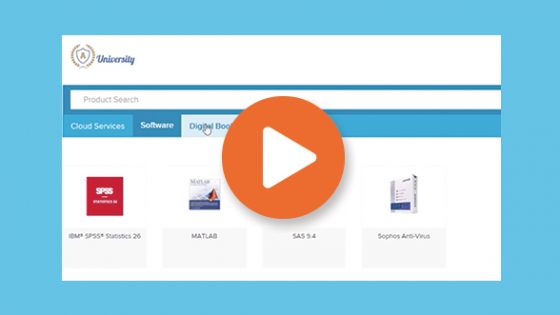Kivuto just released a comprehensive report on how academic institutions manage the software, cloud products, and other digital resources used on campus. Based on a survey of college and university IT leaders conducted in partnership with University Business (UB), the report sheds light on the struggles school IT teams face in the procurement, distribution, and overall management of such resources.
One of the takeaways from the report is that there are three major (and related) challenges looming ahead for academic IT teams. We’ll call them the Three Cs: centralization, compliance, and the cloud. In our next three blog posts, we’ll look at each of these challenges — and why IT teams in higher education will have to address them sooner rather than later.
Let’s kick the series off with a look at the first of the Three Cs: the need to centralize systems, resources, and processes.
The Dangers of Decentralization
One clear finding from Kivuto’s study is that decentralization and silos are creating huge hassles for school IT teams.
When asked how digital resources are managed and distributed on campus, the most common response from academic IT leaders was that the process varies from department to department. This creates a patchwork of procedures for central IT to master and manage. Unintegrated systems with limited interoperability compound the problem, as do the distinct processes involved in managing each cloud product used on campus.
As well as creating headaches for IT teams, this decentralized style of license management comes with considerable costs and risks. When digital resources are distributed through multiple independent systems, it’s all but impossible for IT to get a big-picture view of product adoption rates and usage. This makes it hard to assess campus-wide demand, which can create shelfware problems. It also makes it difficult to ensure compliance with eligibility restrictions, term limits, usage rights, and other product terms and conditions.
What Schools Can Do
Kivuto’s study makes it clear that schools will need to rethink their decentralized approaches to digital-resource management. 63% of stakeholders in academic IT already find the process of managing these resources difficult. As the demand for these resources grows, and more of them move to the cloud, the challenges are bound to grow.
Schools should make an effort to centralize all aspects of digital-resource management. Centralized funding and procurement can increase institutions’ purchasing power by allowing them to secure the best volume pricing. Centralized distribution can reduce shelfware by giving IT more visibility into adoption rates, as well as providing students with a one-stop shop to easily acquire every resource they need.
Transitioning to a centralized model won’t be an easy shift for academic institutions. Departmental IT and faculty may resist abandoning the distinct systems they’ve grown used to. Schools will need to consider whether to build a central management platform in house or explore third-party options. So decentralization isn’t an issue institutions can solve overnight. But the benefits to centralization make it worth the effort.
* * *
This blog is based on findings from Kivuto’s 2020 survey: A New Era of Learning Brings Complex Challenges for Academic IT. View the white paper based on the survey’s findings for more insights into the complexities and challenges of managing digital resources in higher education.















No Comments